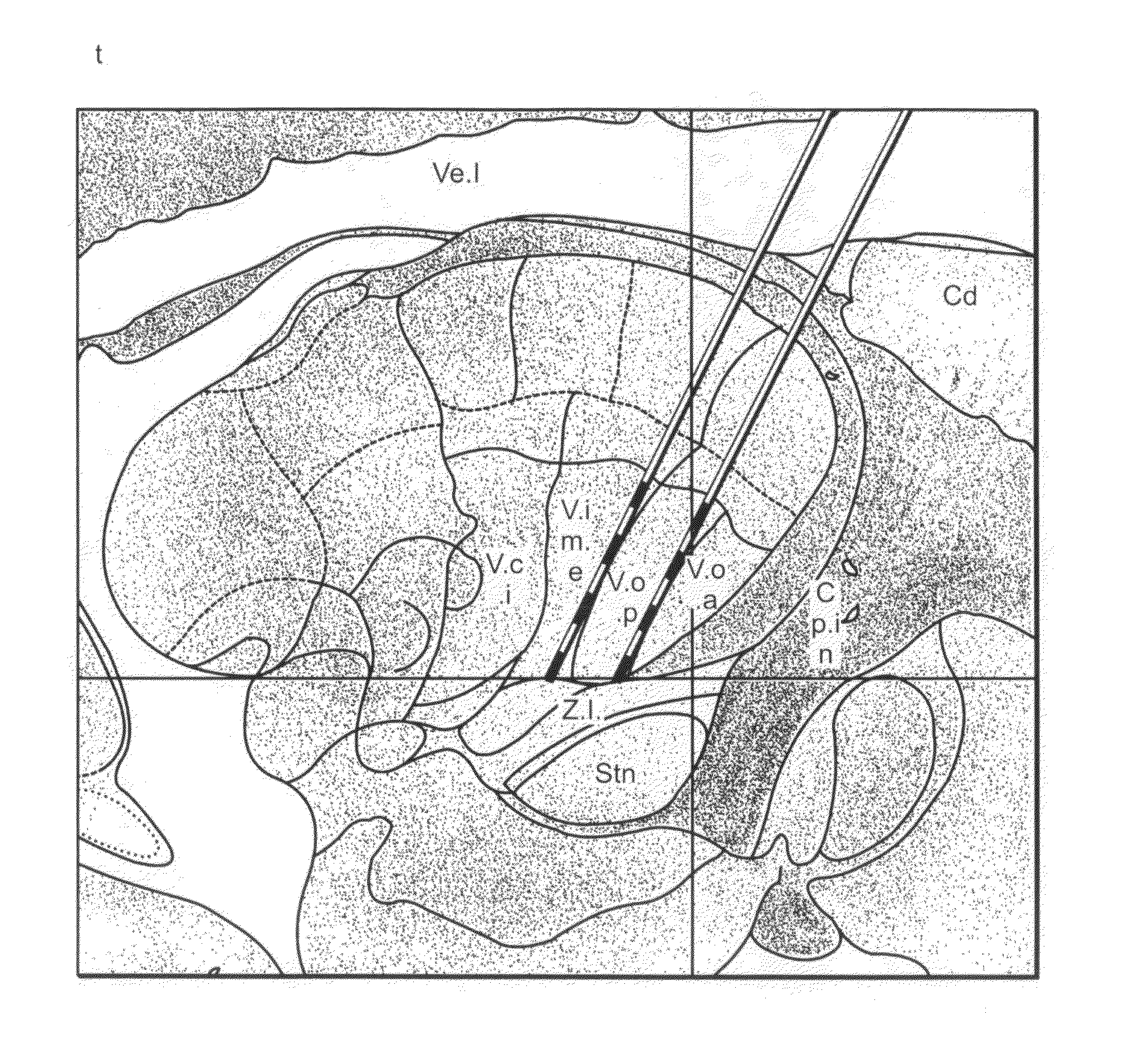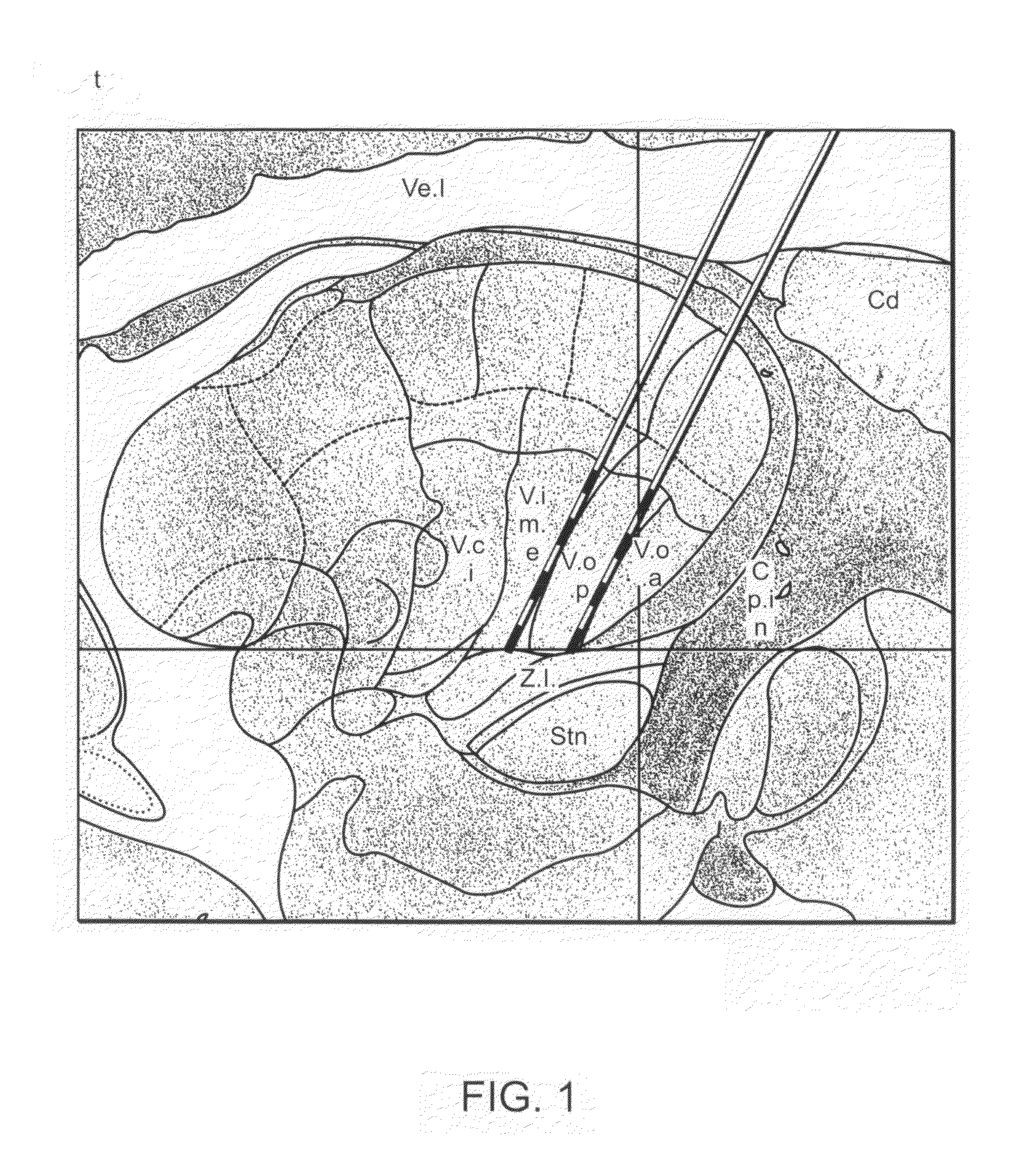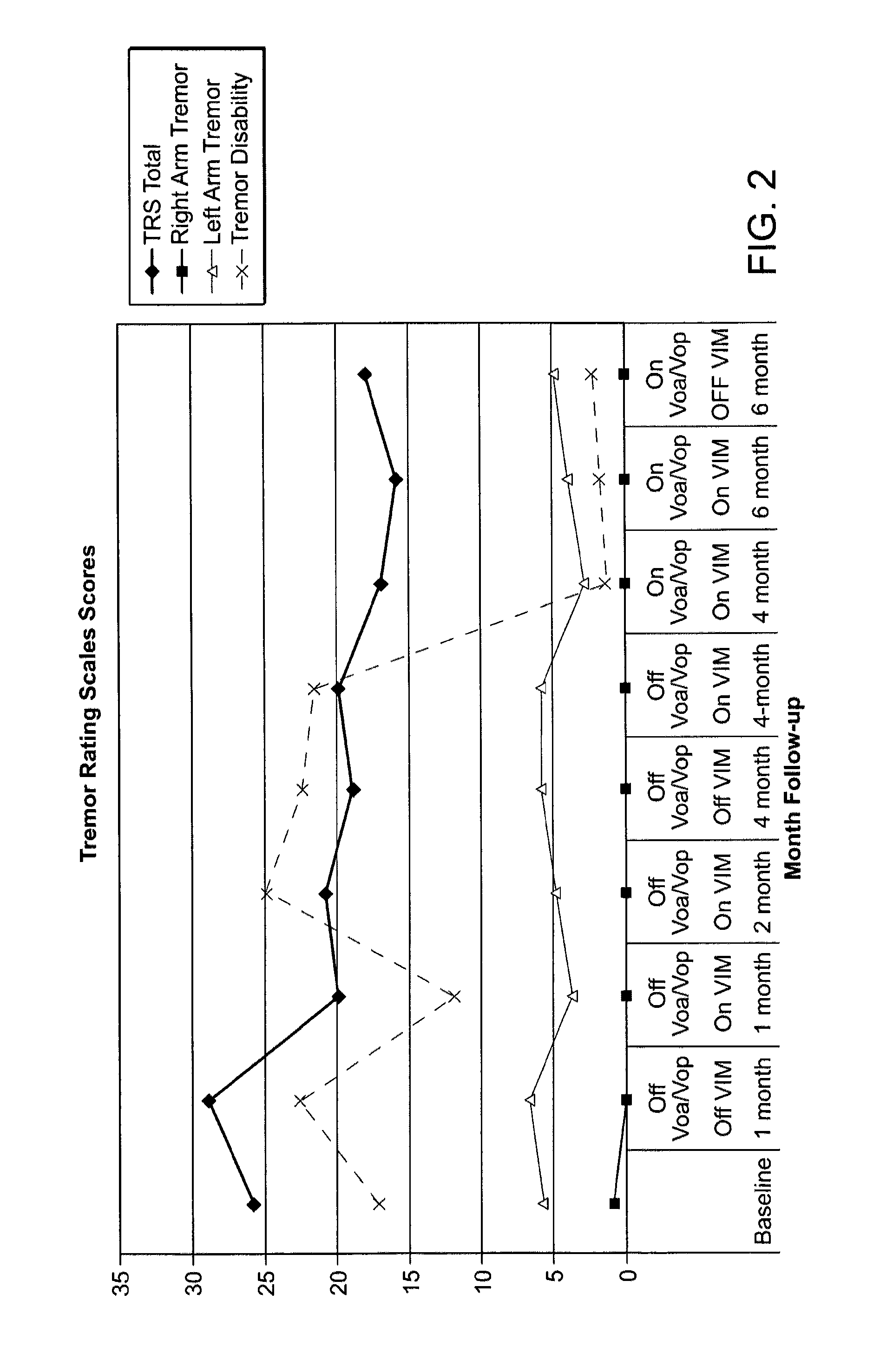Multiple lead method for deep brain stimulation
a brain stimulation and brain technology, applied in the field of neurosurgery and neurosurgery, can solve the problems of diminishing the success rate of dbs procedures
- Summary
- Abstract
- Description
- Claims
- Application Information
AI Technical Summary
Benefits of technology
Problems solved by technology
Method used
Image
Examples
example 1
Clinical Case Study: Holmes Tremor
[0060]A 24-year-old, African-American man with a 16-year history of debilitating left upper extremity tremor presented for evaluation and treatment. At age eight, he sustained a closed head injury when he was struck by a car while crossing a street on foot. A left hand tremor developed a few months after the accident, and remained severe and unchanged 8 years. During his subsequent evaluation he was noted to have left-sided rest, postural and action tremor. He complained that his intentional tremor prevented him from holding a job, and that the tremor resulted in his discontinuation of schooling. He was treated with low dose Olanzepine (5-10 mg) several years after his accident for explosive behavior. He reports that since treatment he no longer has a problem with anger outbursts. He tried high dose dopamine (carbidopa / levodopa 1 gram) for his tremor without improvement. His general physical examination and vital signs were normal. His neurological ...
example 2
Methods for DBS Target and Trajectory Selection and Electrode Placement for Post-Traumatic Tremor
[0061]Informed consent was obtained from the patient described in Example 1 above prior to the DBS procedure. A high resolution, volumetric, three tesla MRI scan was obtained one day prior to the procedure. On the morning of the procedure, a CRW head ring was applied under local anesthesia and a high-resolution stereotactic head CT scan was obtained. Using software developed at University of Florida, the CT and MR images were fused and stereotactic targeting was carried out using the high quality MR images. The software facilitates navigation in “atlas space” (a three-dimensional, orthogonal Cartesian coordinate system centered on the patient's mid-commissural point), which is readily defined by identifying the anterior and posterior commissures and a non-colinear midline point in the patient's brain.
[0062]The target and trajectory were selected in atlas space and the corresponding CRW c...
example 3
Post-Operative DBS Programming and Clinical Outcomes
[0065]Post-operatively, the VIM electrode was first activated and optimized through serial DBS programming sessions. After 2 months of VIM stimulation (with VOA / VOP off), the VOA / VOP stimulator was activated. VIM DBS parameters used were the following: monopolar 2 cathodal, case anodal, 4.1 Volts, 135 Hz, 90 ms; VOP-VOA. DBS parameters were as follows: monopolar 0 cathodal, case anodal, 4.0 Volts, 185 Hz, 90 ms. Standardized tremor and disability rating scales were used to evaluate outcomes over a 6-month period.
[0066]Results. Referring to FIG. 2, the patient's tremor was reduced with VIM stimulation alone, but not enough to significantly alter his disability score. With activation of the single electrode, there was a decline in tremor benefit over time, manifested as a tremor rebound after one to two months on VIM stimulation. After two months of VIM stimulation with VOA / VOP off, the VOA / VOP stimulator was activated, at which time...
PUM
 Login to View More
Login to View More Abstract
Description
Claims
Application Information
 Login to View More
Login to View More - R&D
- Intellectual Property
- Life Sciences
- Materials
- Tech Scout
- Unparalleled Data Quality
- Higher Quality Content
- 60% Fewer Hallucinations
Browse by: Latest US Patents, China's latest patents, Technical Efficacy Thesaurus, Application Domain, Technology Topic, Popular Technical Reports.
© 2025 PatSnap. All rights reserved.Legal|Privacy policy|Modern Slavery Act Transparency Statement|Sitemap|About US| Contact US: help@patsnap.com



